Webhooks via Zapier
Correlated webhooks are a powerful feature that allow you to connect with downstream applications that support webhooks. In this guide, we will walk through using Correlated webhooks with Zapier to connect Playbook results in other tools.
Setting up the Zapier Integration
- In Zapier, create a new Zap and choose the "Catch Hook in Webhooks by Zapier" trigger.
- Note: The "Catch Hook" trigger is a premium feature in Zapier, so ensure you have a paid plan to enable this.
- Select the event as "Catch Hook" or "Catch Raw Hook" (either option works).
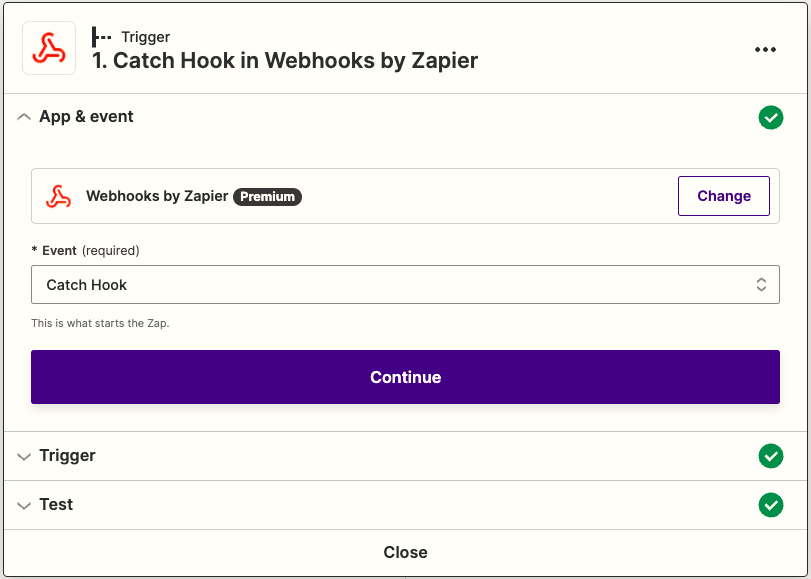
- Continue with the setup, and if necessary, configure advanced features such as pulling specific child elements from JSON.
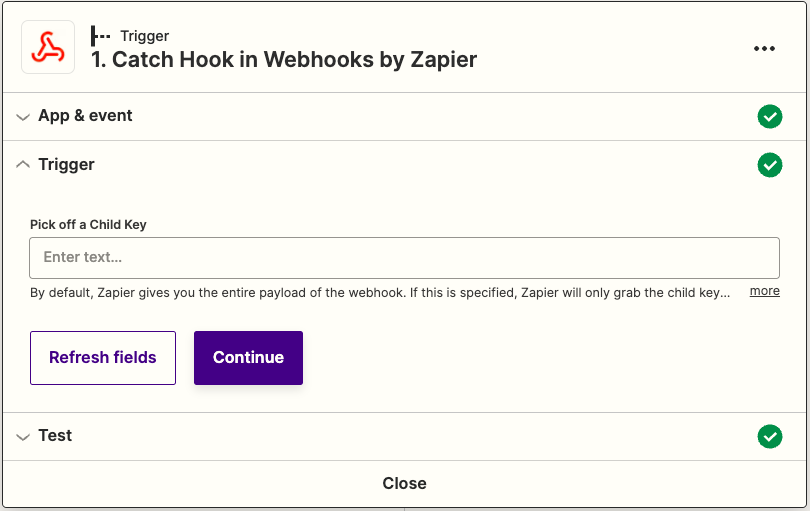
- To test the webhook and ensure it's working properly, copy the webhook URL (you will need this for the next step in Correlated).
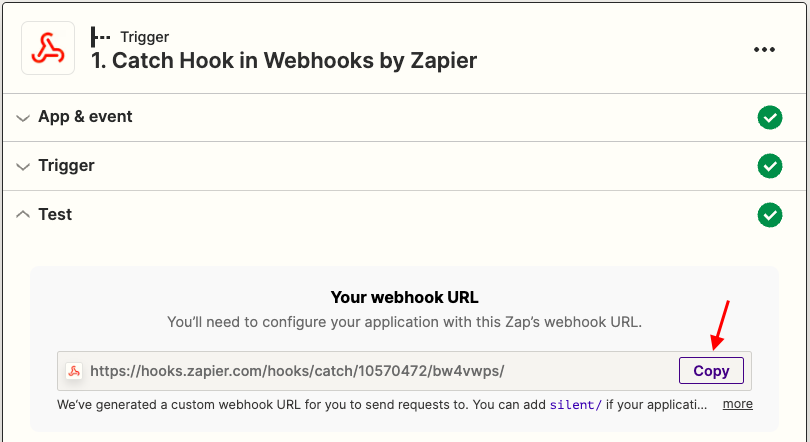
Setting up Correlated Webhooks
- Start by creating a new Playbook in Correlated.
- Configure the Playbook’s trigger by adding conditions that target a specific segment of customers (for example, Account Conversion Score is High).

- Within the Playbook, set up a "Webhook | Send to URL" action by following these steps:
- Connect to your Zapier webhook by pasting the webhook URL you copied in the last step.
- Attach relevant JSON data containing the information you want to sync from Correlated.
- Choose the desired dimensions from the available options in Correlated.
- Note: Be sure to format the webhook in a JSON-friendly format.
- Authentication for Zapier is not required, so leave that field blank.

Testing the Webhook Action
- Now that the webhook is configured properly both in Correlated and in Zapier, you can test the action.
- “Save” the Correlated Playbook first, then click “Edit” to enter the Playbook settings again.
- From editing the webhook action card, you will now see a “Test Action” button. This will trigger the action in Zapier.
- Note: We will run the test for every account or user currently "in" the Playbook. To see this full list, click open the "Results" tab from the Playbook.
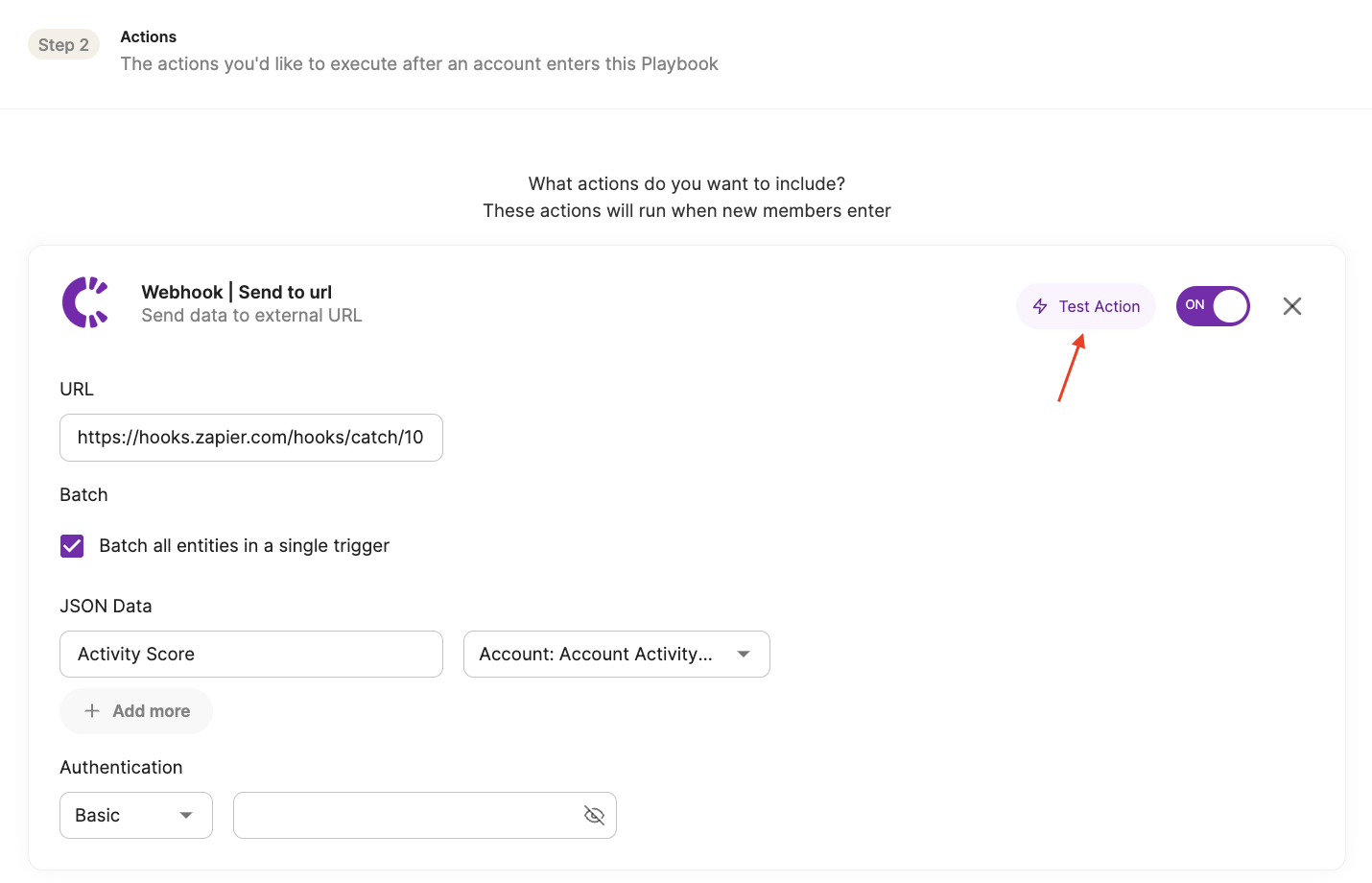

- In Zapier, you should see a list of users / accounts coming in as requests, formatted in an array of JSON elements.
- Zapier formats this information in a human-readable way.
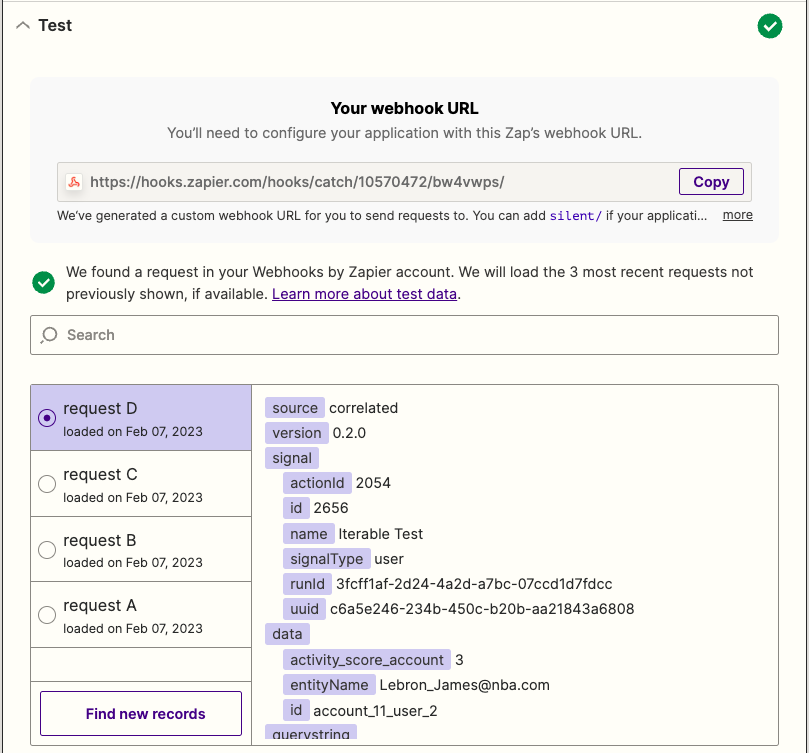
Adding Actions to Downstream Tools
- You're now ready to add a number of actions via Zapier to enable different workflows in your downstream tools!
- Here are some examples of how you might use Webhooks / Zapier to enable your GTM team:
- Create/Update Module Entry in Zoho CRM
- Create Spreadsheet Rows in Google Sheets (watch this Loom to see how it's done)
- Create User in Iterable
- Add/Remove Tag on Company in Intercom
- Create Deal in HubSpot
- Note that moving forward, any time a new user or account enters the Playbook in Correlated (ie meets the conditions you have defined) it will trigger the action in Zapier.
If you need any assistance with other specific use cases, just contact your Correlated rep.
Updated over 2 years ago
